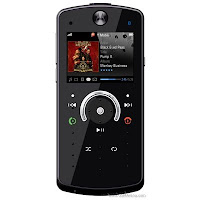After a long period of silence, Eveready is back on the media space. The brand has launched a new campaign in 2009.The new campaign, known as The Red Light Painters in the ad world , is already making noise among the advertising community.
Watch the ad here : The Redlight Commercial
One of the welcome development with the new campaign is that Eveready has gone back to the famous classic tagline " Give Me Red". Earlier, Eveready has changed its iconic tagline to ' Kuch to hai extra"
 .
.The current campaign is for Eveready Ultima batteries.
Frankly speaking , I did not understand the new Eveready commercial. The commercial started with the message that it was made entirely from LED lights, torches and camcoders. And then there was a mouse and the Eveready cat ..... Finally the cat caught the mouse.. That is what I understood.
Today Afaqs carried a story on the new commercial. Read it here.
Only then I understood that there was a story behind the commercial. According to afaqs, the brand is targeting the 15-25 yr olds. May be I did not understood because I am not in the TG.
My feeling is that the new commercial does not tell anything to the consumers. There is no compelling story about Eveready and how the brand is different from its competitors.
The brand is going to face a critical survival issue in future. More and more products are now running on rechargable batteries. Except for clocks and torches, most products which used disposable batteries are now being used with rechargable batteries. For products like clocks, consumers are not too worried about the brand. They will choose any of the major players rather than be loyal.
So in such a scenario, Eveready should be chalking out a survival strategy. It is not about the brand but about the product category.
In my case as a consumer, let me give you the list of products that run on battery in my house : Three clocks
Two remotes
Two Torches
While the new age products like cameras, Ipods, Mobiles,laptops are using rechargable batteries that comes bundled with the product.
In such a scenario, the market for non-rechargable battery market will be limited to a certain households and certain products. There are chances that the entire category getting extinct in future .
I personally think that Eveready is suffering from marketing myopia. The brand has not forayed into mobile batteries or laptop batteries. India is a big market for mobile phones. And typically the batteries need to be replaced. But never seen the brand venturing into this market dominated by chinese makes.
Even in the rechargable segment , Eveready has not done anything to expand the market. These areas may drive the business in future. If the brand is focusing on urban market, without a presence in these segments, I doubt how the brand will survive focusing on the traditional non rechargable batteries.
How ever, I am glad that the " Give Me Red " is back .
Related Brand
Eveready





















